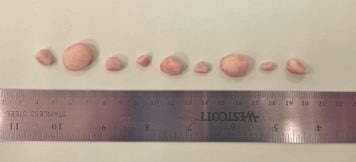Urolithiasis represents the formation of uroliths (calculi) within the urinary tract. These uroliths can be retrieved from various segments of the urinary tract, with the bladder being the most common. Analysis of urinary stones is important not only for an immediate medical approach but also helps evaluate other risks (e.g. nutritional) associated with the formation of these structures proving invaluable support for medical strategies in preventing recurrence.
As anticipated, urolithiasis should not be considered as a single cause disease. Through extensive research, we currently know that various factors increase susceptibility to urolithiasis:
• size (e.g. large and medium breed sized dogs are more prone to struvite uroliths)
• breed (e.g. Dalmatians are more prone to formation of urate calculi)
• sexual status (e.g. male Mastiff dogs are more prone to cystine uroliths; neutered cats are prone to the formation of calcium oxalate uroliths)
• body condition (obese dogs and cats have an increased food intake, which leads to increased deposition of adipose tissue and urinary excretion of mineral, resulting in an increased risk for urolithiasis)
There are numerous retrospective studies of uroliths in dogs and cats. Some of the most recent publications show a decreased trend of incidence of calcium oxalate uroliths in both dogs and cats; struvite uroliths represent the most frequent uroliths retrieved from canine and feline patients.
Several methods are available for analysis of mineral composition of uroliths: oil immersion method of optical crystallography, polarizing light microscopy, X-ray diffractometry, high pressure liquid chromatography and infrared spectroscopy. The latter method is regarded as the gold standard for urinary stone analysis.
At BattLab we offer urolith analysis via infrared spectroscopy (gold standard) with a quick turnaround of results within 24-48 hours. In 2021 464 uroliths were submitted to BattLab for calculus analysis; among these struvite uroliths were the most numerous 240 (51.72%) out 464, followed by calcium oxalate uroliths 137 (29.53%) out of 464.




